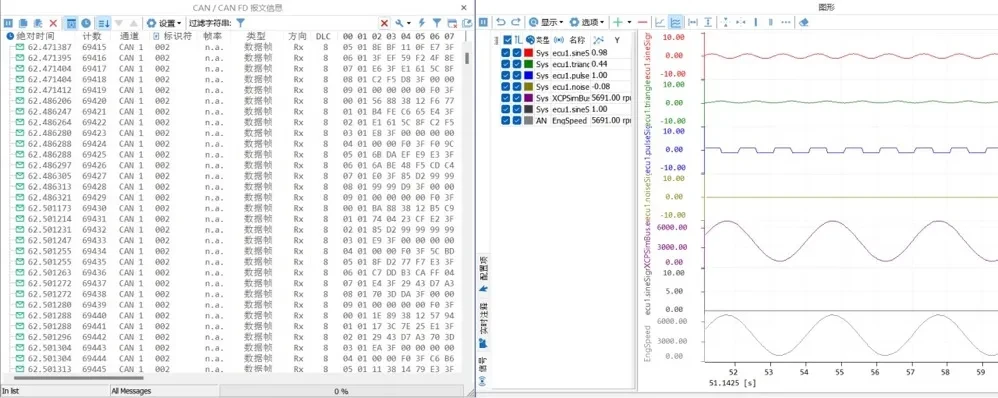KEYWORDS IN THIS ARTICLE: calibration variables, DBC signals, BLF files
Table of Contents for this article
I. Load the A2L file and add calibration variables to the graphical observation
❖ Load A2L file
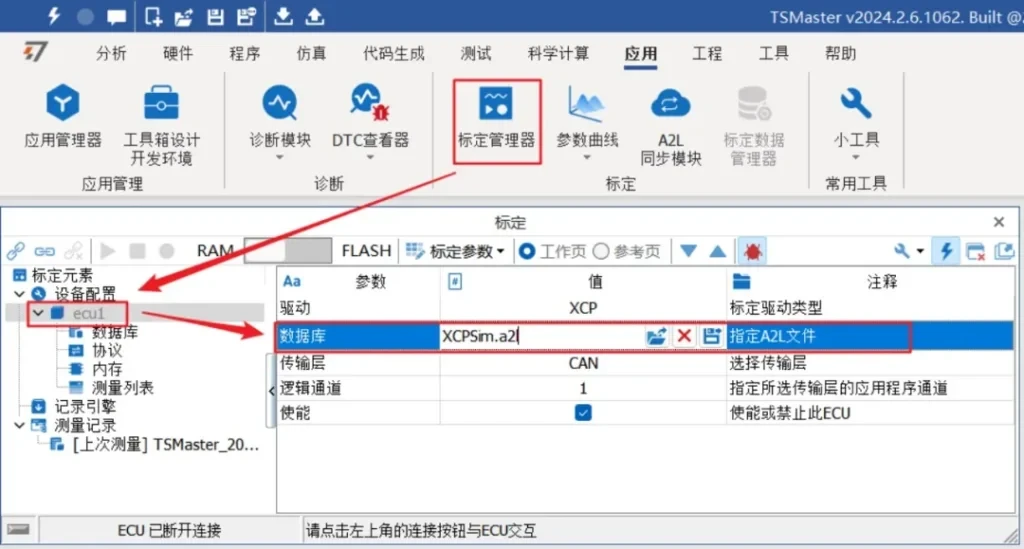
❖ Adding calibration variables to the measurement list
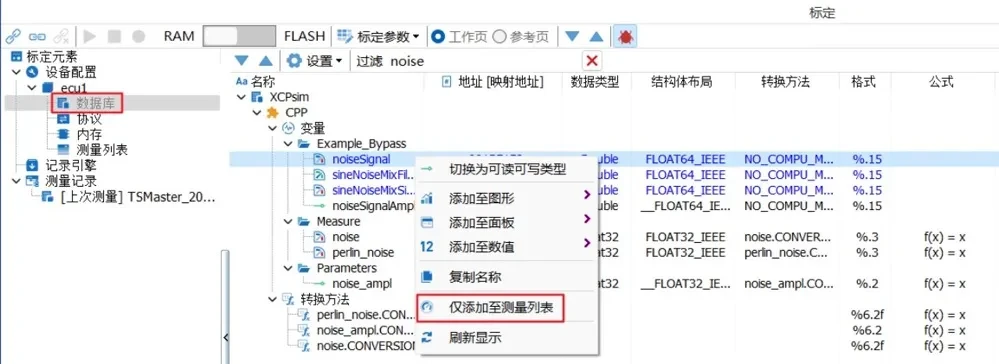

❖ Add calibration variables to the graphs
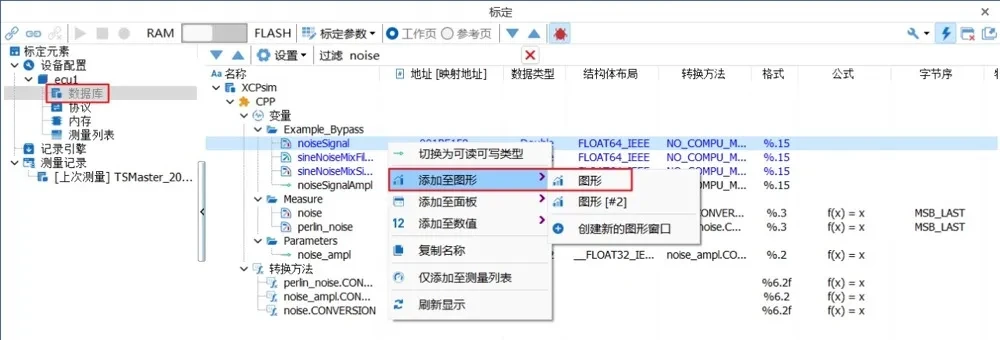
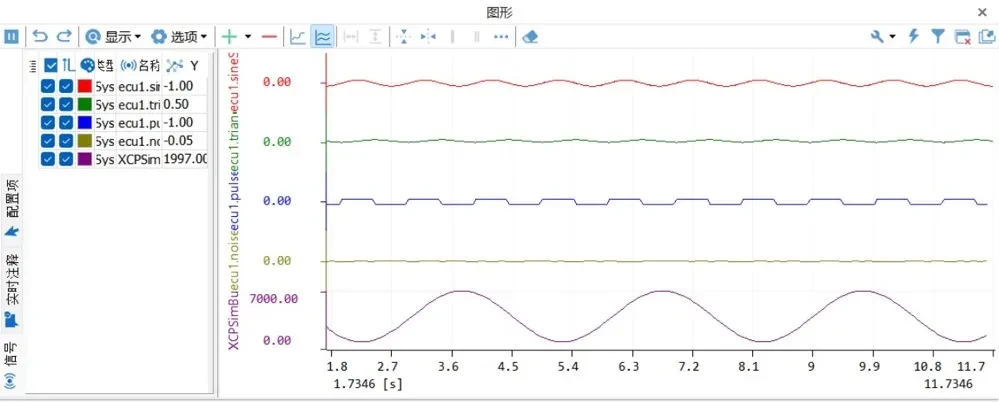
II. Enabling recording of calibration variables
❖ Enable recording of calibration variables
After adding all the variables and signals to be observed to the graph window, it is necessary to enable the recording of calibrations in order to record the calibrations in the same BLF file as the DBC signals. This is done as follows:
Click System Variables on the Simulation page to bring up the System Variable Management window. Select the "Internal Variables" button under the window to select the calibration variables you want to record on the page (you can enter the keywords of the calibration variables in the "Filter" column for quick filtering).
Once you have found the variable you want to log, select it and right-click on it and select "Enable logging".

III. Adding DBC signals to graphical observation
To record both signal data and calibration data from the DBC database, you need to load the DBC database into the TSMaster software and add the signals to be observed to the graph window. The specific operation is as follows.
❖ Load DBC database
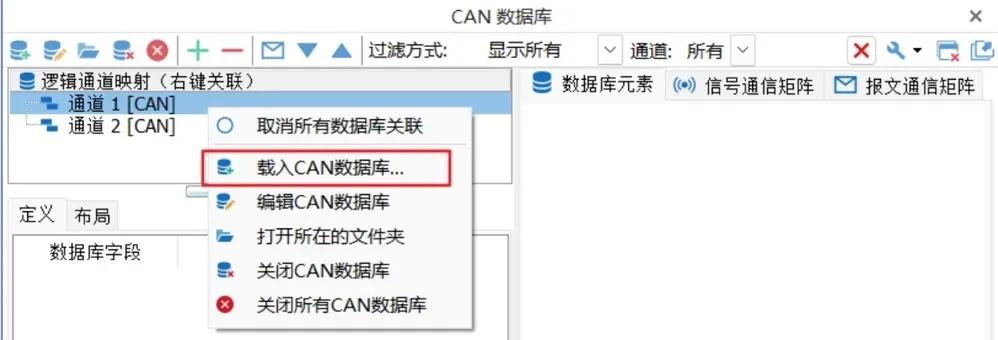
❖ Add Message Sending
Clicking "Add CAN/CANFD Transmit" in the Analyze - Transmit page displays the CAN/CANFD Transmit window, where you can add any frame to the Transmit and set the generator type of the signal to be observed under this message.
Right-click on the CAN/CANFD Transmit window, select "Add Message from Database", select the message to be observed in the pop-up database window and click OK to add the message to the CAN/CANFD Transmit window.
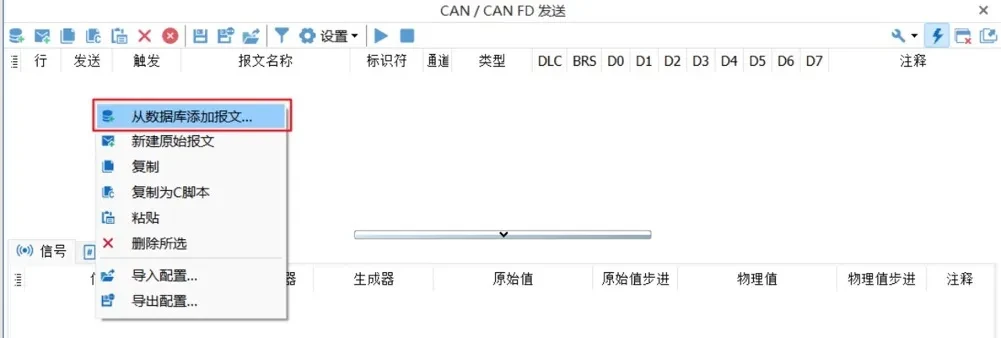
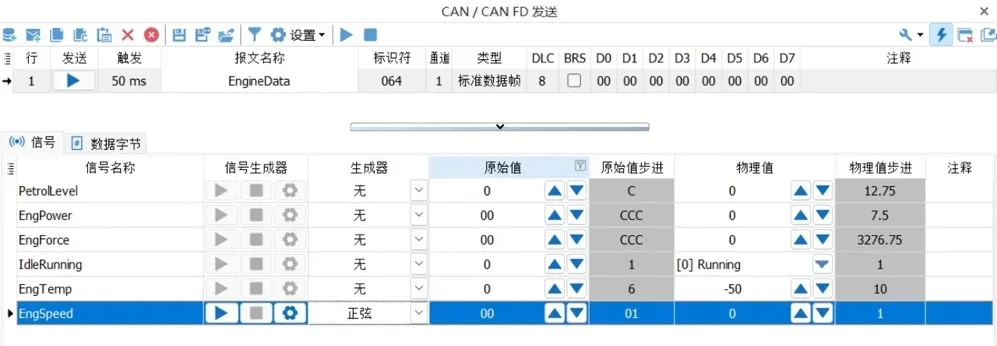
❖ Adding signals to graphical observations
Clicking on the Graph button on the Analyze page will display the Graph window where you can add the DBC signals you want to observe.
Click the right mouse button on the left side of the graph window, select "Add CAN Signal", the database window will pop up, the user can select the signal to be observed according to the needs of the user, after the selection is complete, click OK, the signal can be added to the graph window.
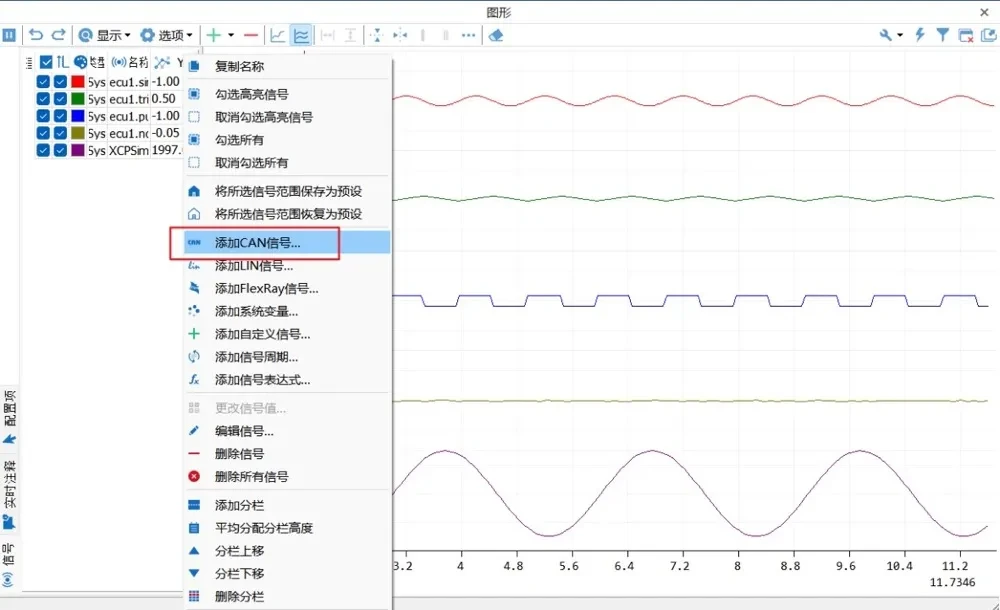
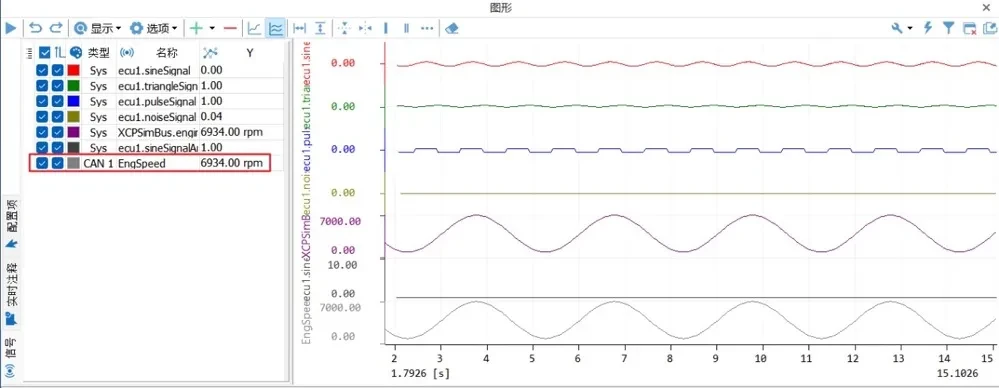
Four, start the project, enable all variables and record as BLF file

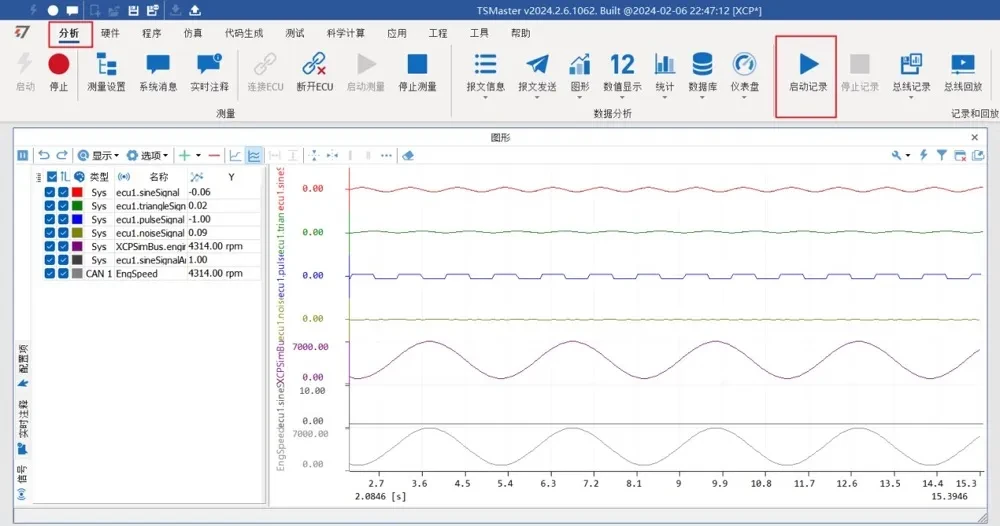
V. Bus Replay of BLF files
Before playing back the BLF file, you need to load the A2L and DBC files and add the calibration variables and DBC signals to be observed to the graphic page, and then do the following.
The BLF file is played back to view the recorded calibration variables and DBC signal data, using offline playback as an example:
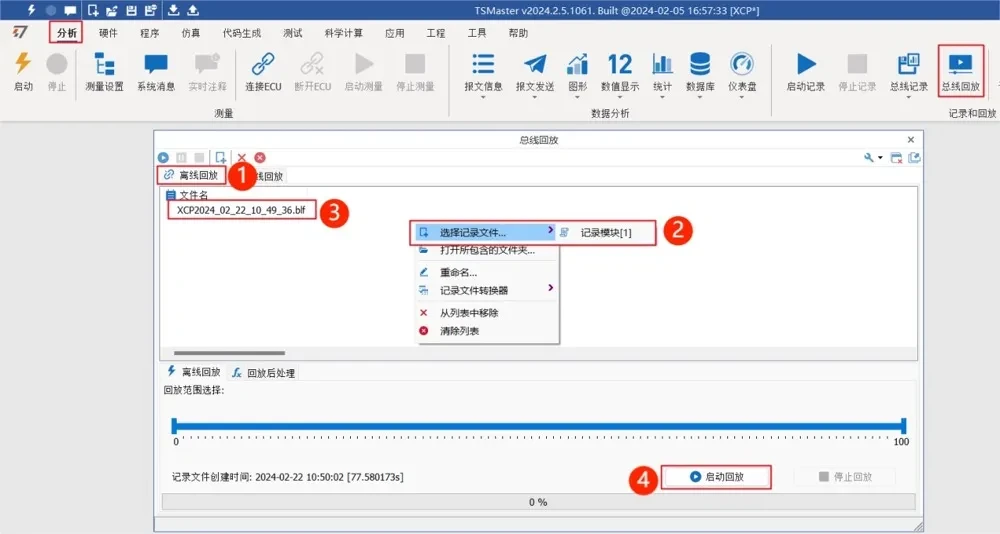
- Open the Offline Playback page in the Bus Playback window.
- Right-click on the blank space and click on the pop-up function menu to select Record File - Record Module.
- The BLF loads in and shows up in the offline playback window.
- Select the BLF file on the Offline Playback page, click the Start Playback button, and finally view the signal data and message data of the calibration signals in the Graphics window and the CAN/CANFD Message Information window.
